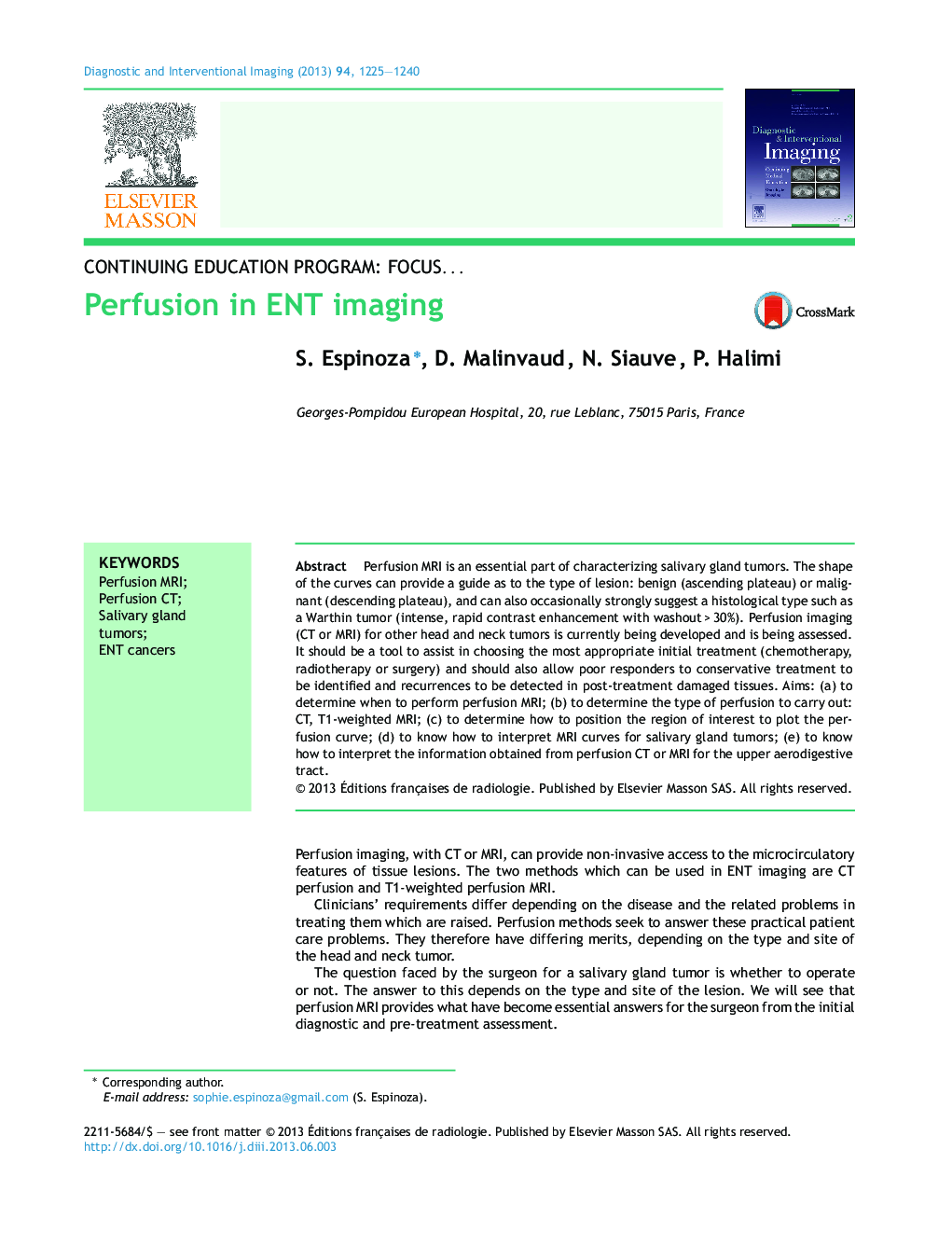| Article ID | Journal | Published Year | Pages | File Type |
|---|---|---|---|---|
| 2725796 | Diagnostic and Interventional Imaging | 2013 | 16 Pages |
Perfusion MRI is an essential part of characterizing salivary gland tumors. The shape of the curves can provide a guide as to the type of lesion: benign (ascending plateau) or malignant (descending plateau), and can also occasionally strongly suggest a histological type such as a Warthin tumor (intense, rapid contrast enhancement with washout > 30%). Perfusion imaging (CT or MRI) for other head and neck tumors is currently being developed and is being assessed. It should be a tool to assist in choosing the most appropriate initial treatment (chemotherapy, radiotherapy or surgery) and should also allow poor responders to conservative treatment to be identified and recurrences to be detected in post-treatment damaged tissues. Aims: (a) to determine when to perform perfusion MRI; (b) to determine the type of perfusion to carry out: CT, T1-weighted MRI; (c) to determine how to position the region of interest to plot the perfusion curve; (d) to know how to interpret MRI curves for salivary gland tumors; (e) to know how to interpret the information obtained from perfusion CT or MRI for the upper aerodigestive tract.
